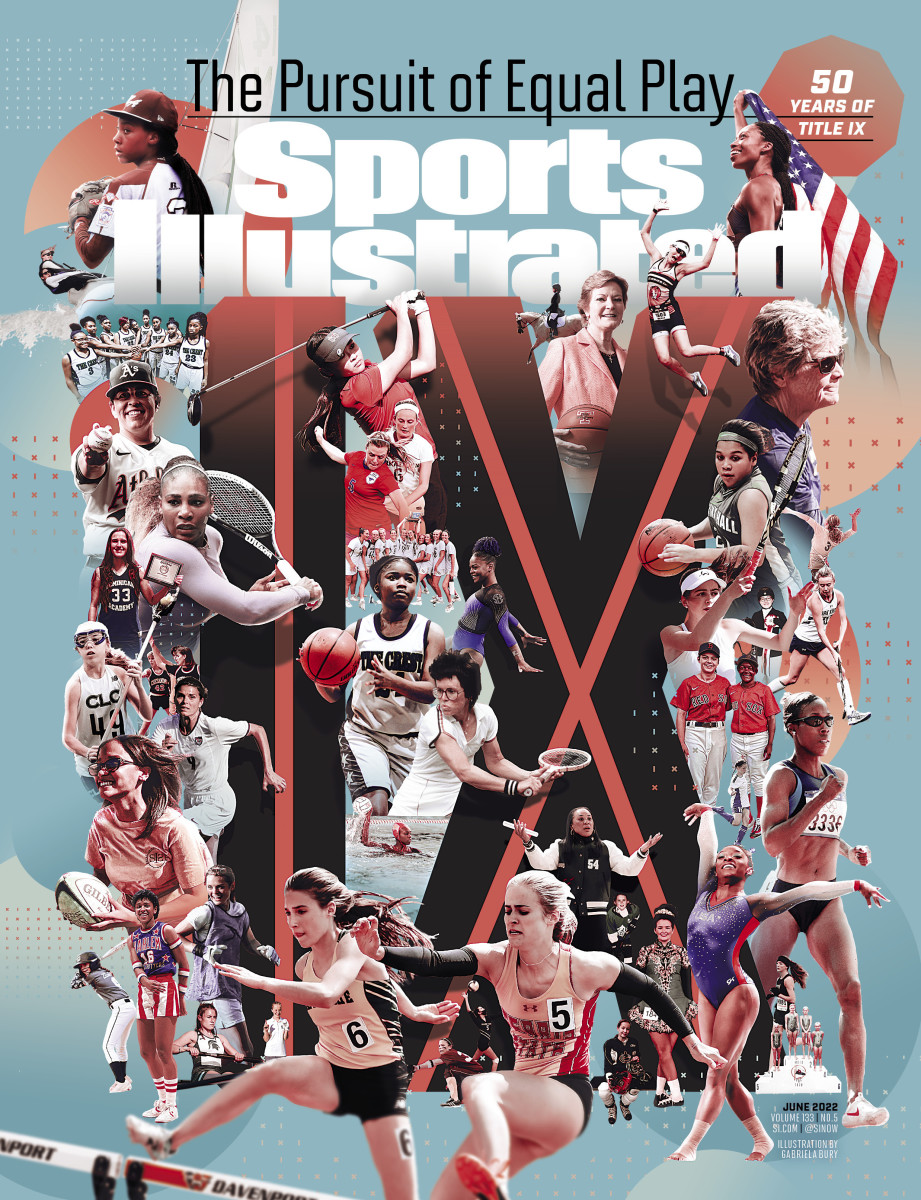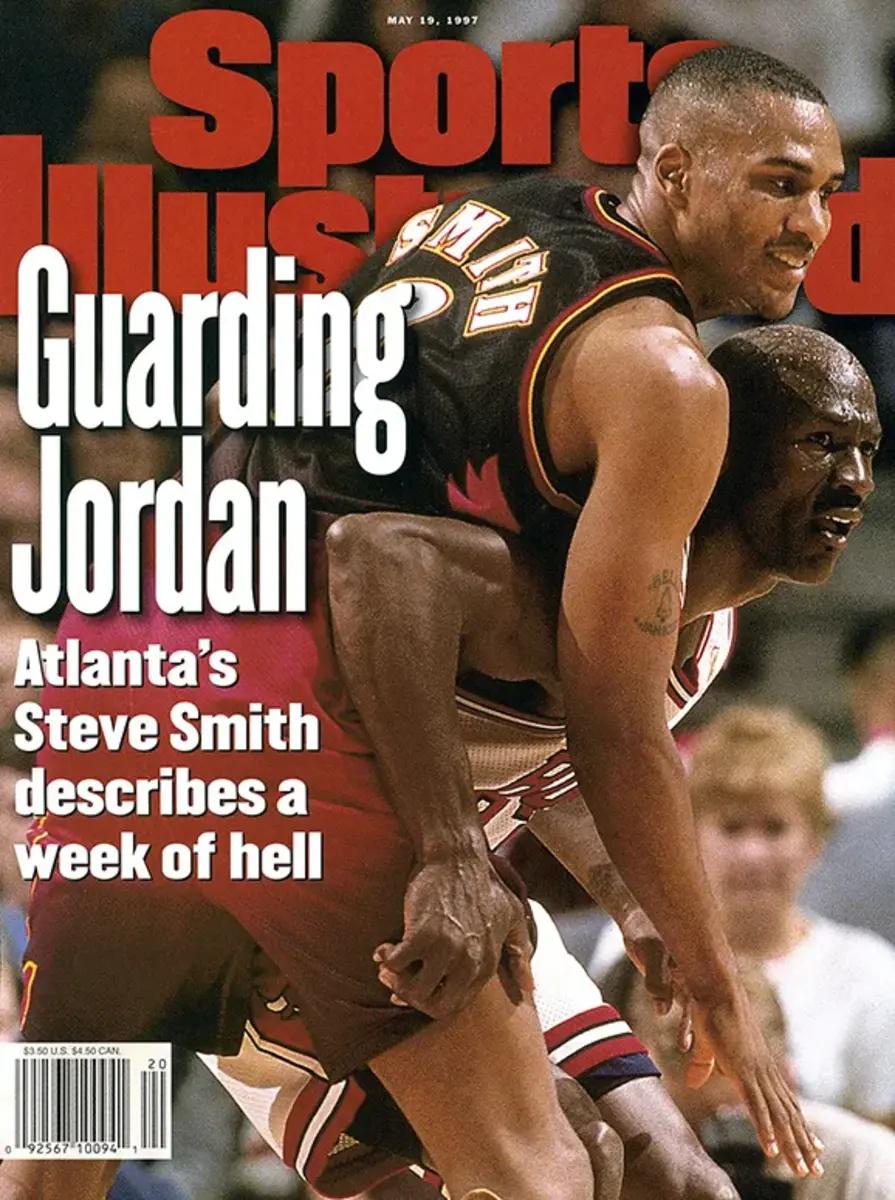SI:AM | How One Law Changed Women’s Sports Forever
Good morning, I’m Dan Gartland. I’m only slightly sleep-deprived after a late-night flight, so I hope this will all make sense.
In today’s SI:AM:
50 years of Title IX

The cover of June’s Sports Illustrated highlights perhaps the most significant development in sports of the past 100 years. On June 23, 1972, then President Richard Nixon signed the Education Amendments Act, which included a clause outlawing discrimination in education on the basis of sex.
The clause, called Title IX, did not explicitly mention sports, but as Maggie Mertens wrote in an essay for the magazine, it “altered women’s sports forever.”
Mertens uses one helpful example to illustrate how Title IX protections have elevated women’s sports. At Stanford, which capped female enrollment at 500 students in the early 20th century, basketball was an afterthought when Mariah Burton Nelson enrolled in 1974, two years after the passage of Title IX:
“Coached by a volunteer graduate student, the team played in a tiny practice gym where 20 or so fans would watch games from a single bench. They wore white T-shirts with masking-taped numbers as uniforms. The team wasn’t allowed to use the weight room. While they played an 11-game season, the Stanford men’s team played 25 games in a brand-new gym, Maples Pavilion, and most of the team had full scholarships.”
But Nelson led an effort to get the school to take the team more seriously:
“Though the enforcement guidelines for Title IX in sports had yet to be finalized, the new law was a fillip. Nelson and two teammates, Sonia Jarvis and Stephanie Erickson, staged three-person sit-ins in the athletic director’s office, refusing to leave until he heard their demands for the same resources the men had. By Nelson’s junior year, the athletic department had hired two paid women’s basketball coaches, Dotty McCrea and Sue Rojcewicz. Players received real uniforms, access to the weight room and got to play in ‘the men’s gym.’ By her senior year, they even had a scholarship athlete.”
In 1985, Stanford hired Tara VanDerveer to coach the women’s basketball team. She is now paid more than $2 million per year to coach a team that plays in front of packed houses at Maples Pavilion and on national television. That would not have happened without Title IX.
But the law is about more than just college sports—just look at the cover of the magazine. It features not only well-known athletes and coaches including Allyson Felix and Pat Summitt, but also photos submitted by readers of girls competing in youth sports, all made possible by Title IX.
The best of Sports Illustrated
Howard Beck was in San Francisco to witness the Warriors’ destruction of the Mavericks in Game 1 as Golden State ran circles around Dallas. … Not every player who enters college basketball’s transfer portal finds that the grass is greener elsewhere, as Jason Jordan explains with the case of Radford’s Josiah Jeffers. … Justin Barrasso has some inside information on Sasha Banks and Naomi’s walkout on Raw. … Will Laws makes the case for an in-season MLB tournament.
Around the sports world
Nick Saban said that Texas A&M “bought every player on their team,” but Alabama players earned a combined $3 million in NIL deals last year “by doing it the right way.” … Max Scherzer left last night’s start after throwing a pitch and immediately signaling for the trainer. … The Yankees cut a prospect accused of stealing gear from teammates and then selling it. … A Pennsylvania teenager became the first high schooler since 1965 to break the four-minute barrier in the mile. … MLB has introduced the automatic ball-strike system in the Triple A Pacific Coast League.
The top five...
… plays from yesterday:
5. Eugenio Suárez juggling a baseball with his feet like a soccer ball after a foul tip
4. Mike Trout’s 11th home run of the season
3. The no-look pass by Stephen Curry that Howard Beck described in the lead of his story
2. Ian Cole’s overtime game-winner for the Hurricanes against the Rangers
1. All 15 goals from Game 1 of the Oilers-Flames series
SIQ
Former MLB reliever Turk Wendell turns 55 today. He wasn’t the greatest pitcher, but he was memorable for his demeanor on the mound during his 11 seasons in the bigs. What piece of jewelry was part of Wendell’s signature look?
Yesterday’s SIQ: Which soccer club won its fifth consecutive European Cup in 1960?
Answer: Real Madrid. The club won the very first European Cup (the precursor to the current UEFA Champions League) in 1955 and successfully defended its title four times.
Madrid beat archrivals Barcelona in the two-leg semifinal to secure a spot in the final against the 1959 German Championship winners, Eintracht Frankfurt. The final attracted a record crowd of 127,621 to Glasgow’s Hampden Park, and Real put on a show for the enormous audience, winning 7–3.
As had been the case throughout Madrid’s impressive stretch victories during that era, Los Blancos were carried by two men against Frankfurt: Alfredo Di Stéfano and Ferenc Puskás. Di Stéfano scored three goals, and Puskás had four. (Puskás, by the way, is the namesake for my favorite award in sports, FIFA’s Puskás Award, given to the most impressive goal of the year.)
Madrid’s run ended the following year when Barcelona won a first-round European Cup edition of El Clásico, but it still dominated La Liga for many years, winning the Spanish league eight times in the 1960s.
From the Vault: May 19, 1997

In the wake of Patrick Beverley’s enthusiastic insults of Chris Paul, how about we take a look at an NBA player who did take his opponent seriously?
In the second round of the 1997 playoffs, Hawks guard Steve Smith was the guy who drew the unenviable task of having to guard Michael Jordan, and Phil Taylor shadowed him as he attempted to do so. It was a challenge, obviously, but there was a silver lining, as Smith told Taylor:
“Guarding Michael is easy—wait, I don’t mean easy, don’t say that. I mean in some ways you don’t get as tired as you do guarding other players. Somebody like Reggie Miller will run you back and forth across the floor through a million picks on every possession. But Michael doesn’t waste much motion, he doesn’t play with you. When he doesn’t have the ball, he doesn’t do much, except wait for an opening. When he gets the ball, he lets you get set, then he does what he’s going to do. It usually won’t be more than a couple of dribbles. So you don’t get especially worn out guarding him.”
Smith did just fine against Jordan during the series, except for the third quarter of Game 1. MJ had 13 in the first half of the game and just one point in the fourth quarter but went off for 20 points in the third quarter.
“I stayed in front of him for three quarters,” Smith said after the game. “But in the third quarter he got that look in his eye. He started making his move to the basket right away, and he had no pattern. He went left, he went right. He drove, he pulled up. When he gets like that, you just have to do your best and hope he eventually cools off. I’ll go home and think about the good things I did against him more than the problems I had. But most of all, I’ll think about Game 2.”
Jordan didn’t exactly light the Hawks up in the series, but he got the job done. In Game 4, Atlanta coach Lenny Wilkens turned to his bench and called on Eldridge Recasner to guard Jordan as the Hawks attempted to cut into a 22-point Chicago lead in the fourth quarter. Recasner did well enough, and Atlanta got as close as 83–80, but the Bulls still won to take a 3–1 series lead. Afterward, Recasner wasn’t envious of Smith’s assignment.
“I would give it my best if I was asked,” Recasner said. “But guarding Jordan for a whole series? I couldn’t imagine that.”
Check out more of SI’s archives and historic images at vault.si.com.
Sports Illustrated may receive compensation for some links to products and services on this website.
